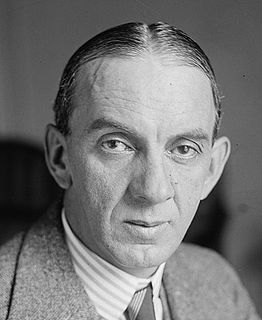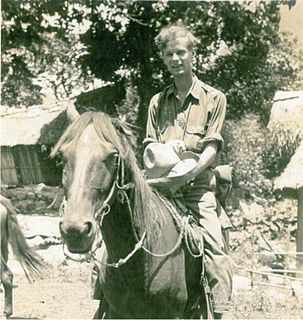Related Research Articles

Morris Swadesh was an American linguist who specialized in comparative and historical linguistics.

Amuzgo is an Oto-Manguean language spoken in the Costa Chica region of the Mexican states of Guerrero and Oaxaca by about 44,000 speakers. Like other Oto-Manguean languages, Amuzgo is a tonal language. From syntactical point of view Amuzgo can be considered as an active language. The name Amuzgo is claimed to be a Nahuatl exonym but its meaning is shrouded in controversy; multiple proposals have been made, including 'moss-in'.
Arturo ('Jack') Warman Gryj was a Mexican anthropologist, member of the cabinets of Carlos Salinas and Ernesto Zedillo, also an author of nine books, two of which have been translated to English. He also wrote multiple articles for the magazine Nexos. He has also taught social epistemology at the University of Chile.

The National Museum of Anthropology is a national museum of Mexico. It is the largest and most visited museum in Mexico. Located in the area between Paseo de la Reforma and Mahatma Gandhi Street within Chapultepec Park in Mexico City, the museum contains significant archaeological and anthropological artifacts from Mexico's pre-Columbian heritage, such as the Stone of the Sun and the Aztec Xochipilli statue.

There is universal agreement that some Mesoamerican people practiced human sacrifice and cannibalism, but there is no scholarly consensus as to its extent.

Xaltocan was a pre-Columbian city-state and island in the Valley of Mexico, located in the center of Lake Xaltocan, part of an interconnected shallow lake system which included Lake Texcoco; this place is inside the San Miguel Jaltocan in Nextlapan. The site was originally settled by the Otomi people but following a war in the late fourteenth century where the Otomi were defeated by an alliance of Tepanecs and Mexica the Otomi were driven off the island and relocated to Otumba, Metztitlan and Tlaxcala. The island of Xaltocan was then resettled by Nahuatl speakers. The name can mean either of two things in the Nahuatl language: either 'sandy ground of spiders' or 'where sand sowing'.

Manuel Gamio (1883–1960) was a Mexican anthropologist, archaeologist, sociologist, and a leader of the indigenismo movement. Although he rejected full sovereignty for indigenous communities in Mexico, he argued that their self-governing organizations, such as tribal governments, municipal organizations, and elected community leaders should be recognized and respected. He is often considered as the father of modern anthropological studies in Mexico. He devised a well-known system for classifying the hunter-gatherers of Central America.
Ricardo Pozas Arciniega was a distinguished Mexican anthropologist, scientific investigator and indigenista. He wrote the classic anthropological works Juan Pérez Jolote, biografía de un tzotzil and Los mazatecos y Chamula, un pueblo indio de los altos de Chiapas.

The state of Oaxaca in southern Mexico has a noteworthy tradition of finely crafted textiles, particularly handmade embroidery and woven goods that frequently use a backstrap loom. Oaxaca is home to several different groups of indigenous peoples, each of which has a distinctive textile tradition.
Eduardo Luis Pareyón Moreno was a Mexican architect and archaeologist. He was a pioneer researcher in several aspects of modern Mexican archaeology. He was born in Azcapotzalco, Federal District, to a family renowned for its contributions to the humanities and sciences.
Cuitlatec, or Cuitlateco, is an extinct language of Mexico, formerly spoken by an indigenous people known as Cuitlatec.
Francisco de Borja del Paso y Troncoso was an important Mexican historian, archivist, and Nahuatl language scholar. He "was and remains the outstanding major Mexican investigator of his era, a fully accepted figure in the international group of his peers."

The Colombian Institute of Anthropology and History, ICANH, is a scientific and technical government agency ascribed to the Ministry of Culture in charge of researching, producing and disseminating knowledge in the fields of anthropology, archeology and colonial history to protect the archaeological and ethnographic patrimony of Colombia.

Jean Bassett Johnson was an American anthropologist and linguist who conducted field studies in Mexico during the 1930s and early 1940s. A doctoral candidate at the University of California, Berkeley, he was a student of Alfred Kroeber and Robert Lowie.

Modesta Lavana Pérez was an indigenous Nahua healer and activist from the town of Hueyapan, Morelos, Mexico. She was recognized as an important activist for indigenous rights and women's rights in Morelos, where she worked as a healer and as a legal translator of the Nahuatl language for the state of Morelos. She was also an authority on local ethnobotany, and on the usage of the temazcal sweat bath. Her traditional wool weavings on the backstrap loom were well known within the state of Morelos, and received many prizes.
Robert J. Weitlaner was born on April 28, 1883, in Steyr, Austria, the son of the civil engineer Julius Weitlaner and Therese Pillinger, a schoolteacher. He studied engineering at Montanuniversität Leoben, from which he graduated in 1908 with the degree of metallurgical engineer. A year later he immigrated to the United States, where he practiced his profession with major American steel companies in Pittsburgh (1909-1910), Buffalo (1910-1913), Philadelphia (1913-1916), Baltimore (1916-1919) and Cleveland (1919-1922). Weitlaner died in Mexico City on July 23, 1968, aged 86.
William Clifford Massey (1917–1974) was an anthropologist who played a key role in the study of the prehistory of the Baja California Peninsula in Mexico. His scientific contributions included archaeological surveys, excavations, and the documentation of previous collections, as well as detailed analyses of ethnohistoric and linguistic evidence bearing of the region's prehistory.

Gonzalo Correal Urrego is a Colombian anthropologist, palaeontologist and archaeologist. He has been contributing to the knowledge of prehistoric Colombia for over forty years and has published in Spanish and English. Correal Urrego is considered one of the most important anthropologists of Colombia. He has collaborated with many other anthropologists and archaeologists, among others Thomas van der Hammen and Ana María Groot.
Muriel Eva Verbitsky de Hunt (1934–1980) was an Argentine cultural anthropologist, academic and writer who moved to the United States in the late 1950s. She is remembered for her contributions to symbolic anthropology and ethnohistory. Together with her husband Robert Hunt, she performed innovative regional work in Oaxaca, Mexico, in the 1960s.
Beatriz Barba Ahuactzin was a Mexican academic, anthropologist, and archaeologist, who was the second woman to earn a degree in archaeology in her country. She was a member of the National System of Researchers from 1985 and a member of the Mexican Academy of Sciences. Upon her fortieth anniversary of teaching, in 1991, she was honored with the gold Ignacio Altamirano Medal by the government of Mexico and the Secretariat of Education. In 2013, the National Institute of Anthropology and History (INAH) paid tribute to her life's work.